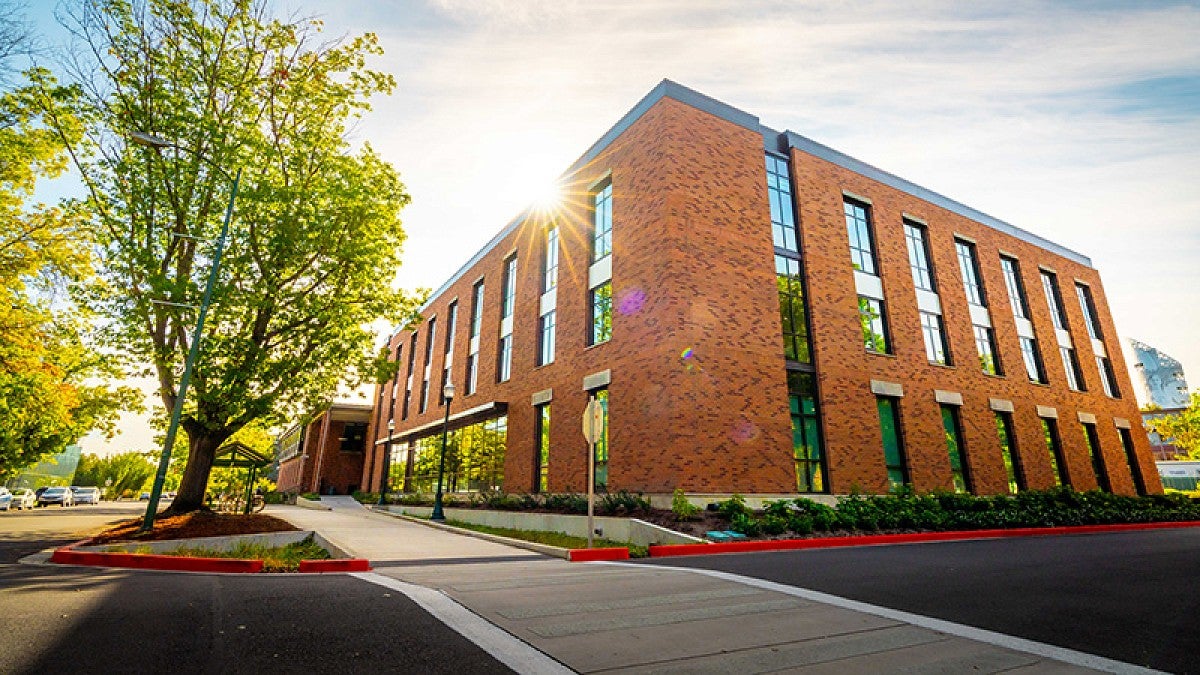With Ducks back on campus after studying remotely for more than a year, one of the University of Oregon’s recent construction projects is gaining attention and generating visits.
University Health Services officially opened its renovated and expanded facility in May 2020, when most of the UO was shuttered due to the pandemic. Now, several weeks into the 2021 fall term, patient and client traffic has returned to pre-pandemic levels, and then some.
“Our care is unique in that it is centered on the needs of students. By providing a wide range of services that are convenient and accessible, students don’t need to leave campus,” said Debra Beck, assistant vice president for student services and enrollment management and executive director of University Health Services. “Students are able to maximize their academic time and minimize the time it takes to get medical or mental health care.”
A critical need for space
Formally referred to as the University Health, Counseling, and Testing Center, the building is home to University Health Services, which includes Counseling Services, as well as the Testing Center. Originally built in 1966, an addition was completed in 2007. But as the UO’s enrollment continued to grow, even more space was necessary to meet the needs of students.
The project added more than 23,000 square feet while also renovating 11,000 square feet of existing space.
In addition to addressing the critical need for space, other objectives of the project were to improve the patient and client check-in process and to mitigate heating, ventilation and air conditioning deficiencies throughout the building.
“The building is well-lit, fresh and inviting,” Beck said. “This project allowed for much-needed space and a modern look and feel. The expanded footprint was designed for better flow between the front reception area, those coming in for same-day care, and for those arriving for prescheduled appointments. The space provides more ease to access care through a one-door model for all the services we offer.”
The total cost of the project was $20 million, funded through two UO internal bank loans. The primary loan of $18 million was funded by a project-specific special student fee through a nonoperations fund. Additional funds were paid out of the health services operations fund.
More room means more services
With more space University Health Services has been able to increase its operations. New and broadened services include clinics for acute care and sports medicine, expanded pharmacy and dental services, and more individual consulting rooms for counseling services.
“The expansion greatly improved our lab, dental, counseling and physical therapy spaces,” Beck said. “We have more medical laboratory equipment, expanded dental services and a gym with exercise equipment where we provide physical therapy.”
As its name implies, the new acute care clinic is for students with injuries and illnesses that can be severe and sudden in onset. It is open with extended hours until 6 p.m., Monday thru Friday.
Previously there was no dedicated space for those services, Beck said. Students with same-day illness or injury were cared for in the primary care units.
“Our new area is set up with bays to provide close care for students who may need IV fluids, medications and monitoring,” Beck said.
Physicians in the expanded sports medicine clinic can treat students with injuries related to any sort of activity. In addition to a physical exam, on-site X-ray and state-of-the-art ultrasound help diagnose and evaluate injuries quickly.
Access for UO employees
While University Health Services primarily serves students, its expanded capacity has allowed it to offer more on-campus services to UO faculty members and staff. Employees can now access dental, acupuncture and physical therapy services, in addition to prescriptions and over-the-counter purchases in the pharmacy.
A full summary of services available to UO employees is available on the health services website.
“It is our hope that we can offer the convenience of on-campus care, as we do for students, to everyone in the UO community,” Beck said. “Not only the occupational health needs of our faculty and staff but also support the well-being and personal medical needs. We look forward to expanding our services for employees.”
—By Colleen Schlonga, Student Services and Enrollment Management


